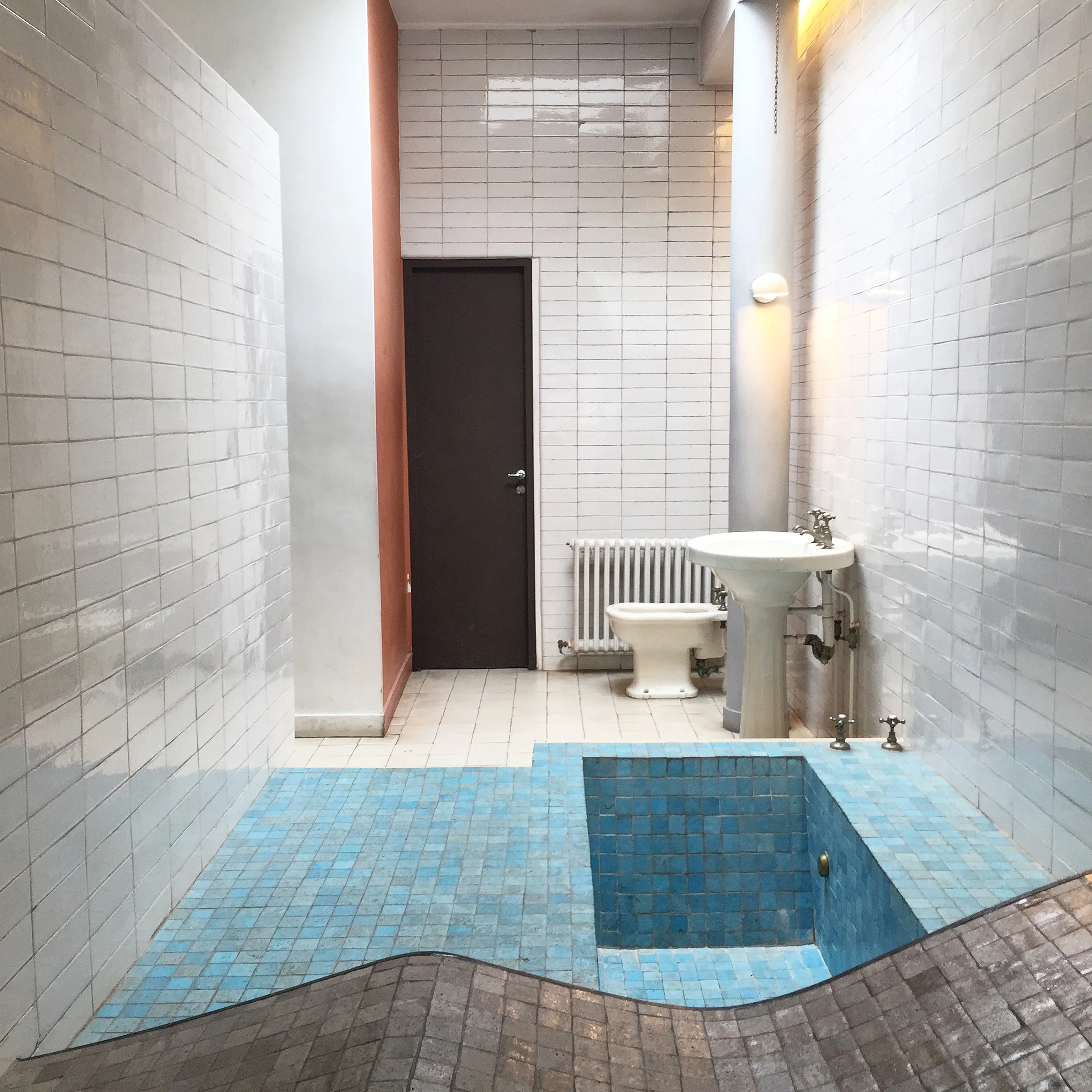Le Corbusier's Villa Savoye a Poissy
Waking up early on a Tuesday morning we were pressed by the day in which galleries and museums are closed in Paris. Thinking of what we could do, Villa Savoye de Poissy came to mind. Architectural outings continue to be of great importance for us both. We discussed other options as well, but this was to be an enchanting morning.
A thirty minute car ride from our hotel, near the Grand Palais, and we arrived to the charming town of Poissy. Upon arrival we quickly found the stone wall which protects the reveal of this stunning work. Having seen such extraordinary images and text of the structure for years I obviously had a certain expectation, but this is why travel and exploring sites is essential. Nothing is ever the same in a book or text as it is to witness, walk the grounds and absorb the energy of the setting.
The flyer describes it as A Manifesto for Modernism. Le Corbusier, born Charles-Edouard Jeanneret, settled in Paris in 1917. The Villa, the weekend home of the Savoye family, was built between 1928 and 1931 and called “les Heures Claires”. The “box in the air” was the culmination of the architect’s formal research and the implementation of the Five Points of New Architecture.
Passing through the gates and walking the gravel path you reach a reveal where the front elevation of this stunning work confronts you. The white achromatic color has the metaphoric quality of pureness and light, while many would include perfection.
The color palate remains white, but the use of materials like nickel or colors of ultramarine tile in the master bathroom brings specific areas to life. A life that has thankfully found a renewed energy from the dark past it had endured during the German, then Allied occupation and years of neglect. The town of Poissy now cares for the continual restoration of this historic monument.
The stilts, free floating façade and use of horizontal space create an iconic impression. Each purposefully selected detail of the architectural plan unfolds as you move through space. You continue to gain a sense of expanded understanding to all the iconic readings and imagery of Corbusier. The details of the drive and Five Points of Architecture make an immediate impact. The color tones against the green landscape highlight the architecture and aesthetic.
We experienced the interiors fortunately just after a group of young children had come on a class tour. The chance viewing of them running through the spaces and lunching on the grounds brought a new feeling and atmosphere to what would otherwise have had a modernist cathedral quality.
By the time we entered we were alone. Our movements through the space and corridors allowed a thoroughly meaningful experience. The sloping gestures create an elegant exchange between the spiral staircase and the ramp both guiding you through varied access points, while the open plan and use of windows creates an indoor / outdoor environment that uses light in functional and liberating ways.
This marvelous manifesto brings to light some of the most intricate and important modernist aesthetics, while embracing this “architectural walk” through history enlightening questions of architecture, space and sculpture.








